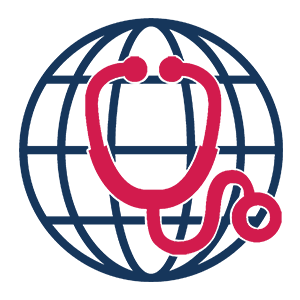During a press conference at the Annual Meeting of the European Association for Osseointegration (EAO) in Milan, the Global Consensus for Clinical Guidelines (GCCG) was announced. For this pioneering initiative, the EAO, the International Team for Implantology (ITI), and the Osteology Foundation have joined forces with the aim of establishing clinical guidelines for the treatment of the edentulous maxilla. Contributors from around the world and professional organisations have been invited to ensure global relevance. The GCCG uniquely integrates feedback from international clinicians, researchers, patients, and stakeholders, with the goal of enhancing patient outcomes.
“The GCCG represents an innovative, evidence-based approach to consensus-building in implant dentistry,” explained the Scientific Leaders and co-initiators, Frank Schwarz and Hom-Lay Wang. Engaging a broad spectrum of international experts, patients, and stakeholders, this initiative contrasts traditional consensus conferences by aiming to create straightforward, practical clinical workflows that improve outcomes for clinicians and patients alike.
Enhancing Treatment through Evidence-Based Guidelines
This first GCCG focuses on the rehabilitation of the edentulous maxilla, which significantly affects patients' quality of life. Therefore, by focusing on real-world application, the GCCG seeks to equip clinicians with actionable, evidence-driven guidelines to improve treatment outcomes for these patients.
Frank Schwarz emphasized the importance of integrating patient and clinician perspectives in the GCCG: "Our guidelines aim to be clinically effective and reflective of patient needs, ensuring that our recommendations enhance treatments and ultimately improve patients' lives.”
"Therefore, at the core of the GCCG's methodology are Patient Reported Outcome Measures (PROMs) and Clinician Reported Outcome Measures (CROMs), evaluated through systematic reviews,” explained Frank Schwarz. “What also makes the GCCG unique is that comprehensive feedback is gathered via tailored Delphi surveys that have been distributed to a substantial number of clinicians, patients, and public stakeholders. We have undertaken these extensive efforts to incorporate a wide range of perspectives. The results from these reviews, surveys, and associated meta-analysis then form the basis for formulating the actual clinical guidelines, ensuring their clinical relevance and practicality.”
A Global Collaborative Effort
The GCCG draws expertise from around the world, making the guidelines applicable in various cultural and clinical contexts. “This is not just about developing another set of guidelines; this is about reshaping how we approach clinical practice in implantology,” explained Hom-Lay Wang and continued: “By bringing together voices from all over the world and including both clinicians and patients, we are creating a global framework that will have a lasting impact on the way we care for patients."
Many traditional consensus conferences had only regional impact and did not achieve global recognition and clinical relevance. The GCCG wants to overcome this by involving contributors and associations from around the world.
The efforts will culminate in a consensus conference in Boston in June 2025, where over 120 international experts will discuss and formulate the first global guidelines for the treatment of the edentulous maxilla.
Joining Forces to Advance Clinical Practice
Representatives of the three core organisations that have teamed up to jointly organise the GCCG were also present at the press conference.
Ronald Jung, President of the EAO and a co-initiator of the GCCG, underlined the collaborative strength of the GCCG, noting, “The strength of the GCCG lies in its ability to unite experts from around the world and create guidelines that will benefit clinicians and patients alike. We are striving to make sure that these guidelines will be useful across different clinical environments, ensuring better treatment outcomes for patients facing the challenges of edentulism.”
Charlotte Stilwell, President of the ITI, supported this sentiment, adding, “The ITI is proud to support the GCCG because it aligns with our mission of promoting the highest standards of clinical practice. We believe that by integrating patient feedback and focusing on evidence-based solutions, the GCCG will deliver guidelines that have a tangible impact on improving patient care.”
Frank Schwarz, commented on behalf of Christer Dahlin, President of the Osteology Foundation, who could not attend. He also emphasized the alignment with their goals: "The GCCG aligns perfectly with the Osteology Foundation’s focus on oral regeneration and its mission to ultimately improve patient care. Our joint aim in this collaboration is to create clinical guidelines that directly translate into better treatments for patients."
With these statements, the leaders highlighted the powerful collaboration in developing globally applicable clinical guidelines. Concluding the press conference with a strong message of unity and a forward-looking vision, they added that this alliance might be a starting point for further collaborative efforts and could serve as a stepping stone for additional activities. “Discussions are already ongoing,” they said.
About the GCCG Organisers
The GCCG is organised collaboratively by an alliance of three core organisations:
• The European Association for Osseointegration (EAO): A non-profit organisation formed as an international, interdisciplinary, and independent science-based forum for all professionals interested in the art and science of osseointegration.
• The International Team for Implantology (ITI): A global association of professionals in implant dentistry that serves the dental profession by providing a growing global network for life-long learning in implant dentistry through comprehensive quality education and innovative research for the benefit of the patient.
• The Osteology Foundation: A global organisation that supports science, research training, and education in the field of oral tissue regeneration. The objective is to develop and share knowledge and understanding, leading to evidence-based clinical practice for the improvement of patient care.
The three core organisations have invited representatives of the following organisations to participate in the consensus conference:
• Chinese Stomatological Association (CSA)
• Japanese Society of Oral Implantology (JSOI)
• Korean Academy of Oral and Maxillofacial Implantology (KAOMI)
• Oral Reconstruction Foundation (ORF)
• Osseointegration Society of India (OSI)
• Brazilian Society of Periodontology (SOBRAPI)















